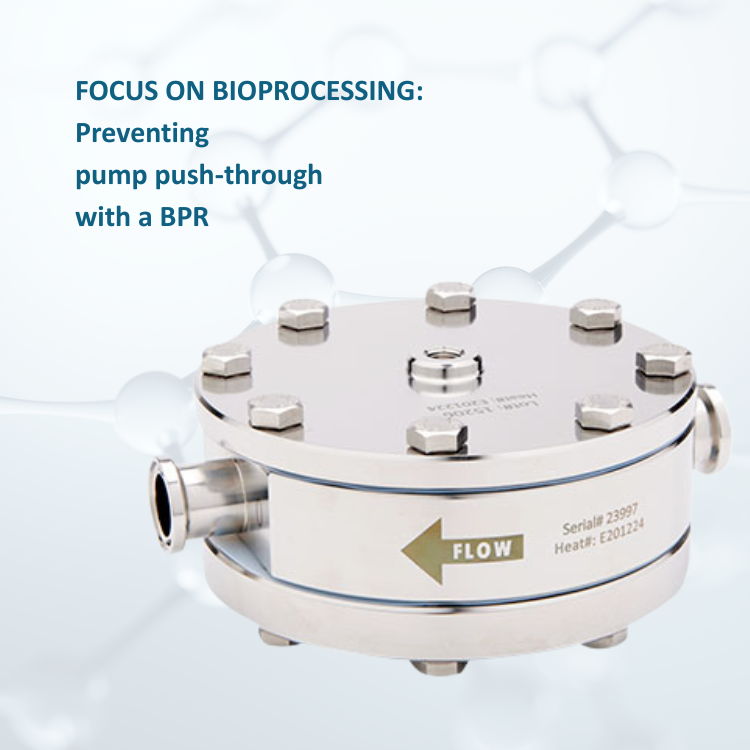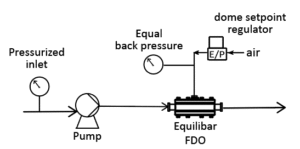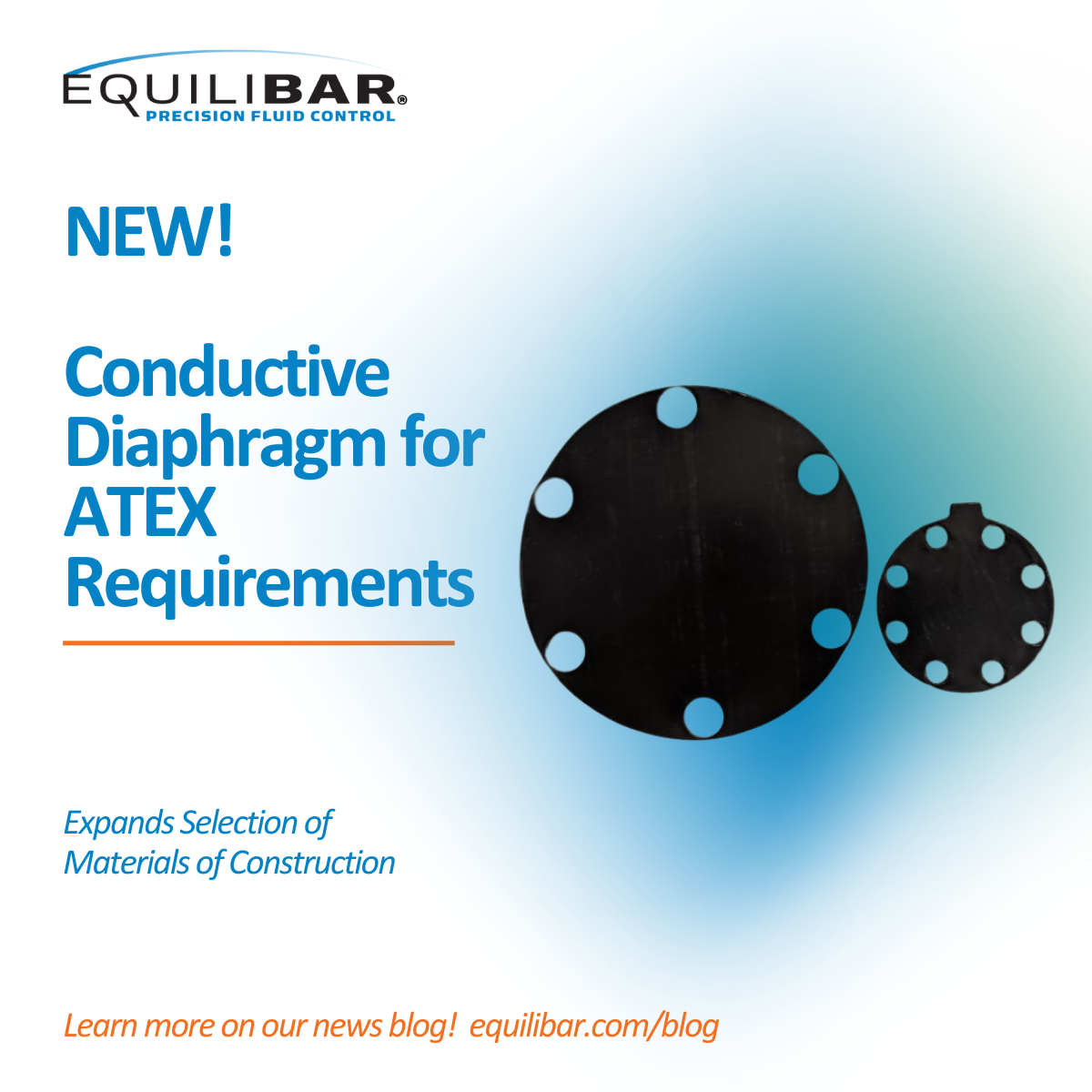Maintaining the purity and integrity of biological substances is one of the most important aspects of bioprocessing applications. While sanitary pumps are designed to minimize contamination risks, pump push-through flow remains a significant challenge. Preventing pump push-through is key to maintaining quality.
Pump push-through flow occurs when head pressure at the pump inlet pushes fluids through the system even when the pump is not actively operating or when it is operating at a very low flow. Often the head pressure is caused by supply tanks that are elevated to conserve limited clean room space.
Problems associated with push-through flow include:
- Deviations in the intended concentration of solutions, affecting the efficacy and safety of the final product.
- Imprecise dosing and timing, which can be critical for product quality
- Unchecked flow may result in the unnecessary waste of high-value media and buffers, increasing production costs.
One reliable way to manage pump push-through is by placing a back pressure regulator (BPR) at the outlet of the pump. A BPR maintains consistent pressure upstream of the pump, ensuring that flow rates remain controlled despite the head pressure on the pump inlet. By providing back pressure slightly above the head pressure, the BPR ensures that the pressure within the delivery system is maintained, effectively eliminating the uncontrolled push-through flow.
Equilibar® FDO sanitary BPRs are especially well suited to handle the pump push-through flow in sanitary processes. They are designed and built using BPE standards for bioprocessing applications and are able to maintain stable pressures even at low flow conditions. In addition, the unique multi-orifice dome-loaded design results in instantaneous control when system pressure fluctuates. The dome setpoint can be maintained either manually or electronically depending on system needs.
Additional benefits of the Equilibar design include the ability to handle a wide flow rate range and a simple construction that facilitates easy maintenance.
A new application page gives detailed steps on how to use an Equilibar device to prevent pump push-through flow in sanitary processes as well as examples and schematics. Please visit the page to learn more about this important option for modern bioprocessing systems.
And, as always, we invite you to contact one of our experienced application engineers to discuss your specific fluid control challenge. They look forward to hearing from you!




